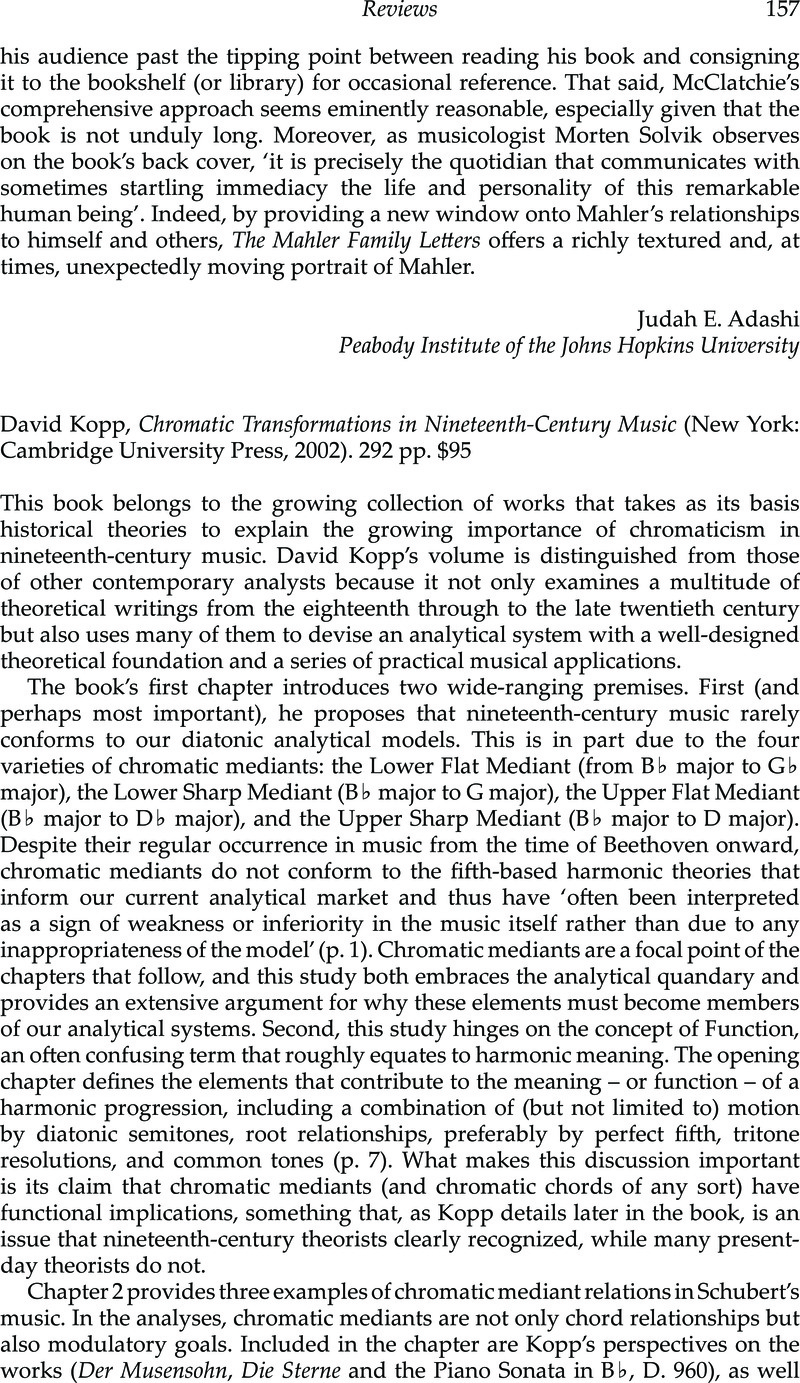No CrossRef data available.
Published online by Cambridge University Press: 13 April 2011

1 Peter Smith considers this exact passage an early example of a three-key exposition (a designation usually reserved for Brahms's sonata forms), although with the caveat that the large-scale goal of the Exposition is ultimately the F-major dominant that begins the second key area. See Smith, , ‘A Mutual Response to Sonata Form’, Music Theory Spectrum 16/1 (spring 1994): 93Google Scholar.
2 Charles Smith argues that the failing of transformational theory is its inability to distinguish between analyses because a series of transformations are not unidirectional. Nonetheless, Smith's argument may be somewhat problematic in light of Kopp's assertion in Chapter 6 that it is contemporary theory that attaches a definite direction to the Tonic–Subdominant–Dominant–Tonic paradigm. Although Riemann found this ordering more satisfying, he by no means espoused it as the way function should work. See Smith, ‘Functional Fishing with Tonnetz’, Presentation to the Annual Meeting of the Society for Music Theory (2002).